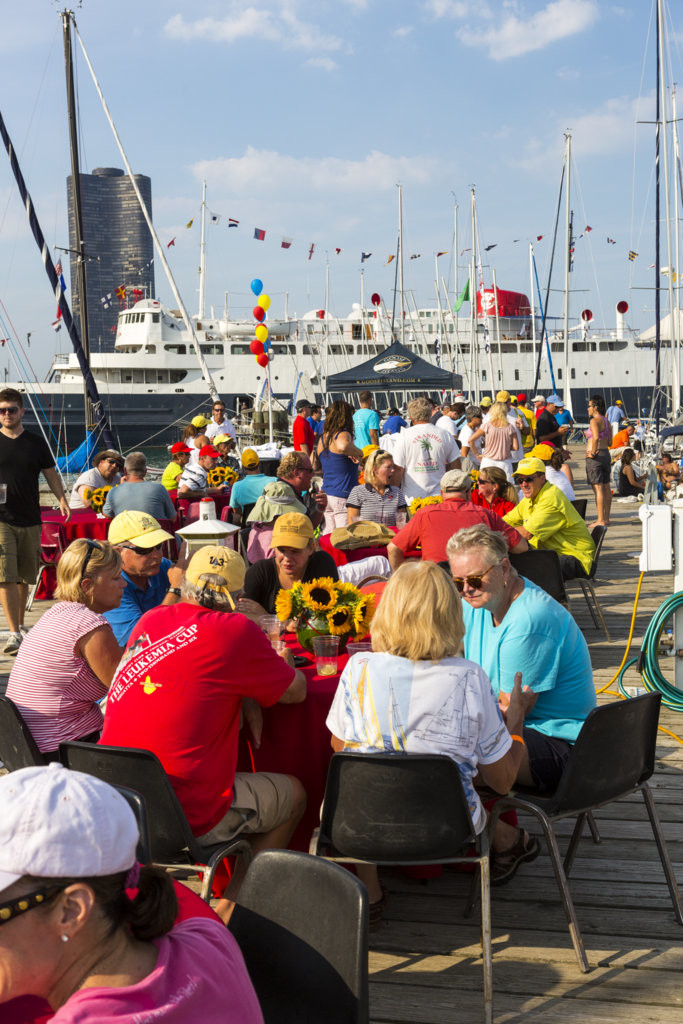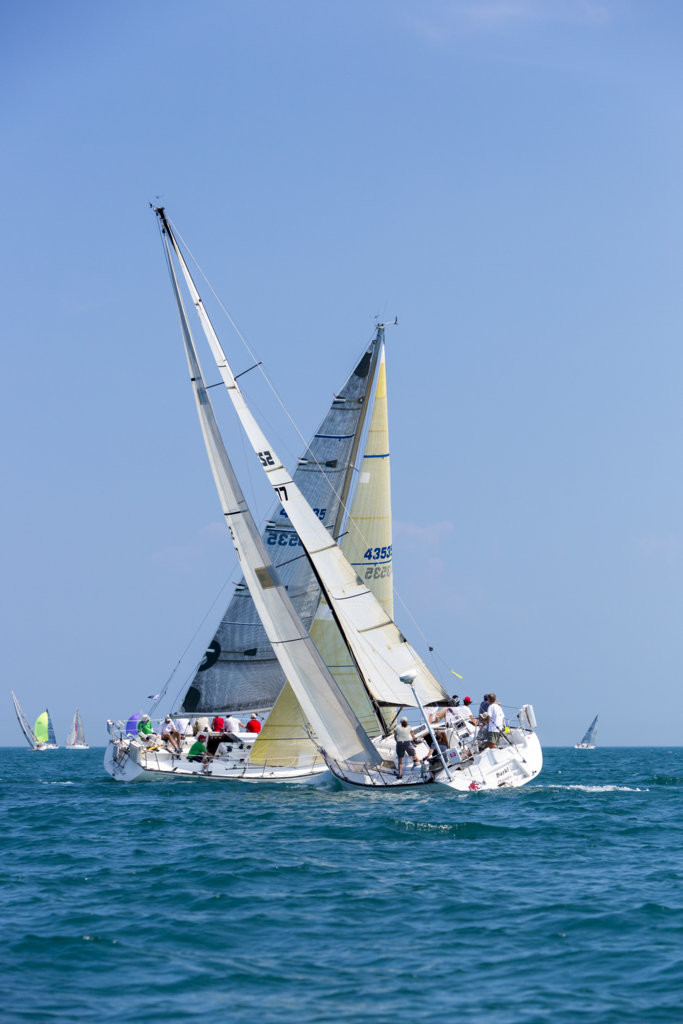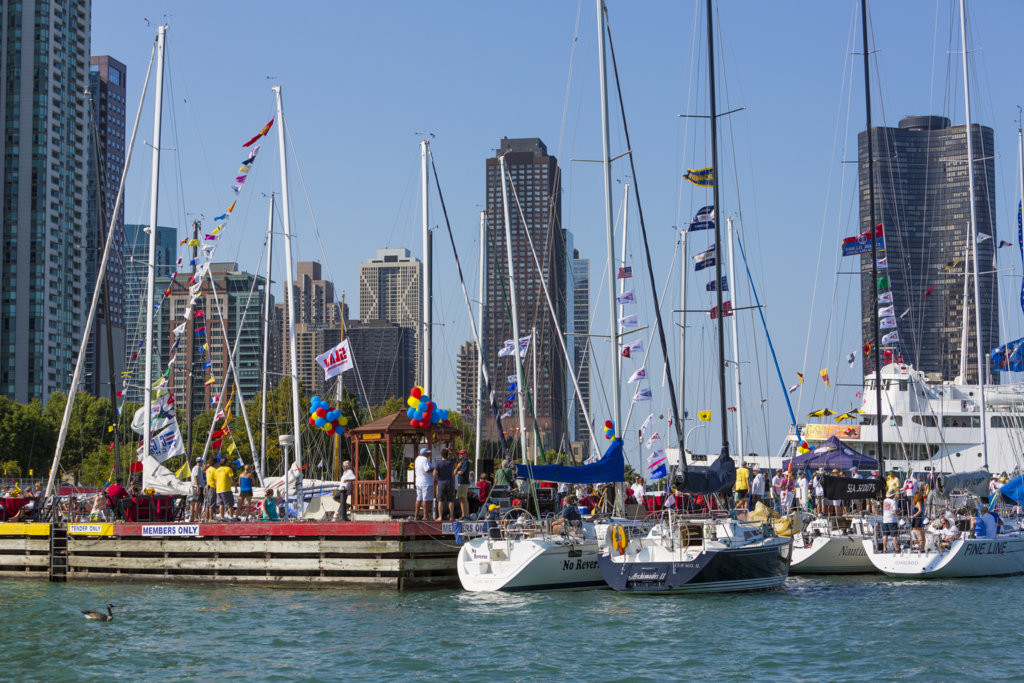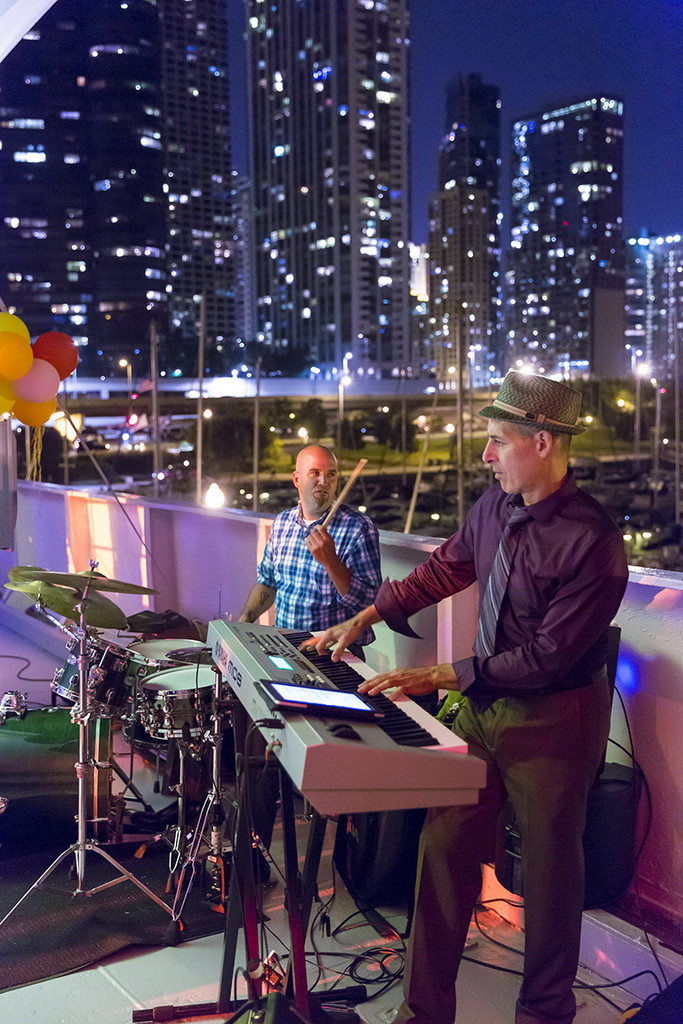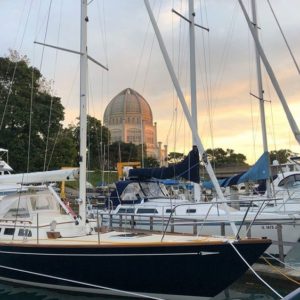The Chicago sailing community has a long tradition of fierce competition, grand regattas, yacht parades and glittering celebrations. Each summer the community hosts a special series of events to support blood cancer research. The Leukemia Cup regatta is critical for one particular sailor because the money raised has helped him defy the odds and survive the battle of his life. Travis Wilhite, a strapping Texan with a smile as broad as his ten-gallon hat and a deep love for sailing, tells his survivor’s story and explains why each summer’s racing season is an experience he’ll never take for granted.
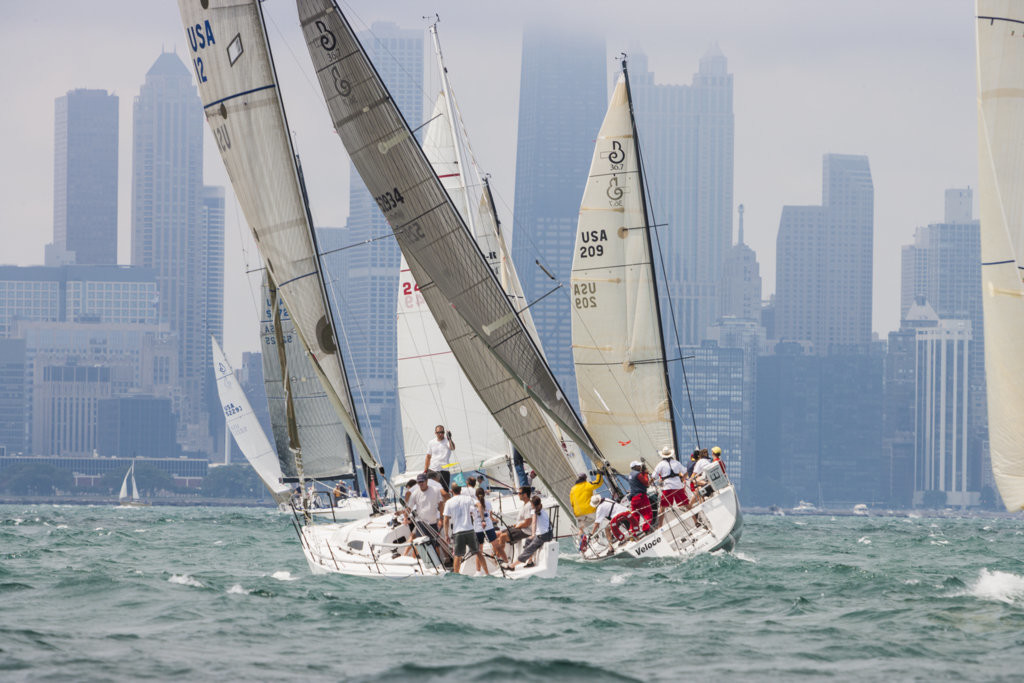
I started sailing when I was six years old on Lake Travis outside Austin, Texas. On a whim, my father bought a 21’ sailboat at a boat show, and that’s how we got into sailing. My younger brother and I didn’t like it so much at first, but by the second year, we were sailing regularly. My parents bought my brother and me a Sunfish sailboat when I was nine, and we took lessons from a kid on the University of Texas sailing team. We thought we were the stuff, it was so much fun. By the time I was in high school, Dad had bought a larger sailboat which we could spend the night on. It was like camping, only on the water. By my senior year in high school, I was sailing year round several days a week.
In 1999, I left Austin to take a job in Chicago. My brother lived here and it seemed like a natural choice. I didn’t realize at the time that there would be so much sailing and racing here. Shortly after arrived in Chicago, I met a friend who had a boat in Waukegan Harbor and began sailing with him. The following year, I began racing on a number of boats out of Waukegan and during the summer of 2002, I met my wife, Honore, at a sailboat race called the Chicago-Waukegan. She was racing out of Monroe Harbor on a boat called Wings. At the party for the sailors, my captain met Honore and introduced her to me. On one of our first dates, we went Wednesday night beercan racing on Wings where I was invited to join the crew.
In 2003, Honore and I were married at the end of May and spent the summer racing on Wings. We won the Chicago Boat of the Year award for our performance that summer and I also sailed in my first of five Mackinac races, which I loved. We raced every weekend for the 15-week season including all of the major regattas.
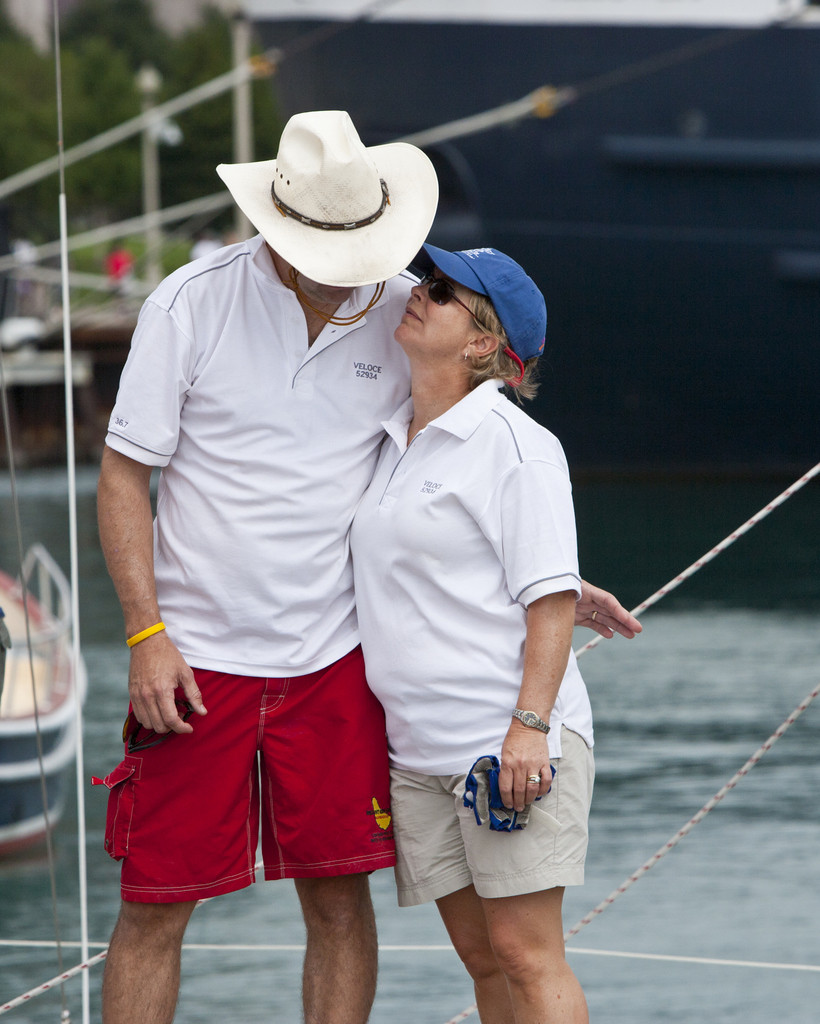
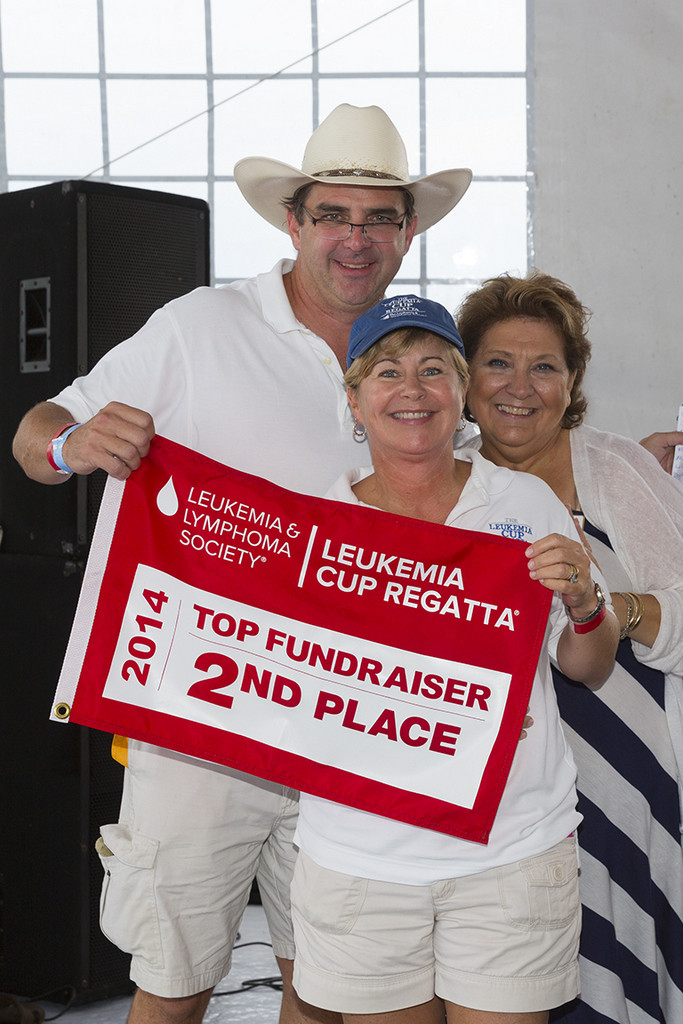
In 2004, as we were gearing up to defend our title as boat of the year, I found a lump under my chin when I was shaving. I spoke to my doctor, and we tried several different antibiotics over the course of six weeks. The lump kept getting larger and I grew tired. Finally, having ruled out an infection and a cyst, my doctor sent me to have surgery to remove the lump and biopsy it.
The week of waiting from the biopsy to the diagnosis was the worst of my life. My surgeon told Honore after the procedure that he felt it was lymphoma. He didn’t know what kind of lymphoma but he said we needed an oncologist.
I was 36 years old, in terrific health, married for a year and trying to have a family. Hodgkin’s disease, a form of lymphoma, is widely considered one of the most treatable, and curable, cancers. Non-Hodgkin’s lymphomas, of which there are 27 varieties, are some of the most deadly and least curable cancers. For a week, we prayed for Hodgkin’s disease. Isn’t that horrible, you are hoping you get a terrible disease because it’s better than an even worse disease? Then the call came. It was Grade 3A Follicular Non-Hodgkin’s Lymphoma. One of the worst diagnoses I could get.
In the world of Non-Hodgkin’s Lymphoma (NHL), there are two basic subtypes of cancer. The first, or acute, is related to T-Cells in the blood stream. These are typically very fast developing cancers and can kill within weeks or months if they go undetected. However, these are also often curable so the race is really to identify and begin treatment quickly. The second group is the follicular lymphomas. These are indolent or very slow growing, cancers. Follicular lymphomas are incurable. Treatment is focused on palliative care and keeping the patient a symptom-free as possible. People have been known to live for years with these diseases, requiring periodic removal of tumors or other treatments to alleviate symptoms. My cancer was a hybrid mix of acute and follicular lymphoma. To give you an idea of how rare my cancer is, twice as many men will be diagnosed with breast cancer in the US (about 1500/yr), than total patients diagnosed with my disease (about 700/yr). Right after my diagnosis, I had a PET scan to determine the extent of my disease and discovered 14 tumors throughout my body. Within a week of getting the diagnosis and having the PET scan, I was in CHOP-Rituxan chemotherapy. The treatment lasted six months and it took me about a year to completely recover.
Our treatment plan from the very beginning was to do the maximum chemotherapy my body could sustain and hope for 10 years of remission. The CHOP-Rituxan worked, and I achieved remission. For the next 2 years, I had CT scans and met with Dr. Grinblatt regularly as I continued to be in remission.
Honore and I committed to living life to the fullest and having a family even though my cancer would come back someday. It was simply a matter of deciding not to let the disease dictate our lives. In January of 2008, our daughter, Hope, was born. Sadly, in May 2008, my routine CT scan discovered two lymph nodes which were larger than they should have been. I underwent a CT-guided needle biopsy, an extremely painful procedure, to extract enough material to perform a biopsy. According to Dr. Grinblatt, the chances of getting the exact same diagnosis would be in the millions, so if it was lymphoma, it was most likely a different form. Unfortunately, the odds were not in my favor. The diagnosis came back four days later exactly the same. Since I had my lifetime maximum of the CHOP-Rituxan chemotherapy drug, we were left with only a stem cell transplant as a treatment.
Basically, there were two bullets left in the treatment gun. One was a stem cell treatment using my own stem cells, called an autologous stem cell transplant, and the other was a donor stem cell transplant. My brother was a near perfect match to be a donor, but the mortality rate for a donor stem cell transplant was high enough that Dr. Grinblatt felt strongly an autologous one was the way to proceed. If the transplant worked I could get 5-10 more years and then possibly have the donor transplant when my cancer returned. I was young and strong enough to make it and it was the best path forward.
In June 2008, I began three months of chemotherapy to prepare my body for the stem cell transplant. I was in an isolation transplant unit at Northwestern Hospital for a month. The chemotherapy in a transplant kills all of your stem cells. The process takes six days of intense chemotherapy during which time my white blood cell count fell to zero, my red blood cell count fell so low I received transfusions multiple times per day. On the seventh day, with my stem cells completely shut down, doctors re-introduced my stem cells which had been harvested in the weeks before the transplant began. They call this my re-birthday.
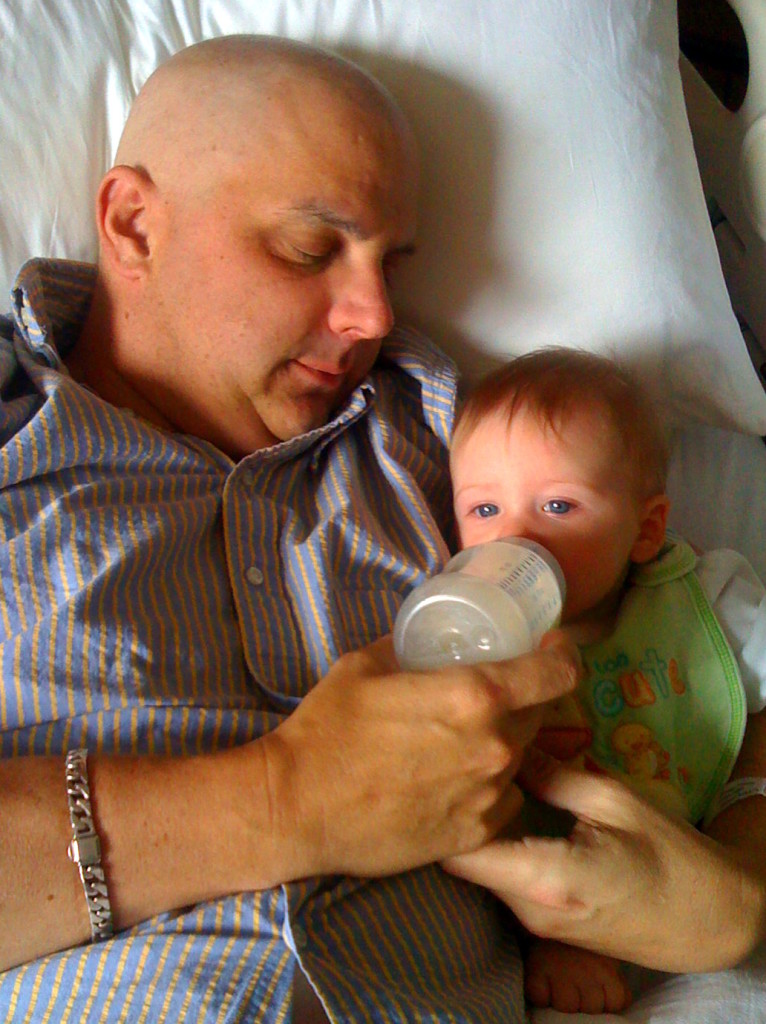
Then, we had to wait for my body to respond. If the stem cells took, I would begin registering a red blood cell and white blood cell count within 18-25 days. For 10 days, I lay in the hospital bed barely able to move. I have never felt so terrible in my life. Then, my blood counts began to register. My doctor couldn’t believe how quickly my body had responded. By day 12 after the transplant, my counts were high enough I could go home.
All told, I was in the hospital 18 days. It should have been 30-45 days, but I was lucky and my body responded quickly. I went home to Hope (who was now 9 months old), and Honore. I was still incredibly sick and run-down, but I was out of treatment. I remain in remission today. If I make it to September, I will be 7 years in remission. According to my doctors, I’m in the best shape I have been my whole life. Most of my side effects have dissipated, although I still have some short term memory issues which may never be resolved.
After my initial battle with NHL in 2004, Honore and I began raising money to fund research on blood cancers. We decided to support the Leukemia & Lymphoma Society because 80-85% of the money they raise goes directly to researchers, several of whom we had the honor of meeting. It was serendipity that one of the Society’s fundraising events was the Leukemia Cup Regatta so we could both fundraise and sail.

In 2005, I became chairperson of the executive committee for the Leukemia Cup Regatta. We moved the event to Columbia Yacht Club and brought in Tracy Howard and many of the wonderful people who continue to run this event today. When Honore and I started with the Leukemia Cup, the event raised $70,000. Last year, we raised more than $423,000 and were the second largest Leukemia Cup Regatta in the country.
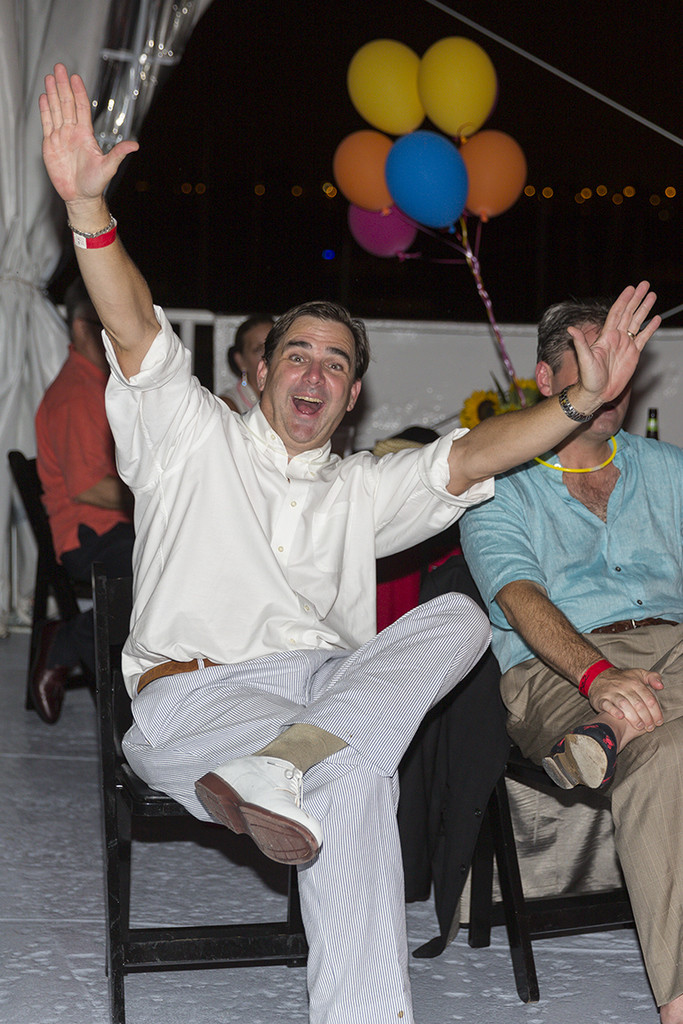
To support our efforts, please go to www.sailtravis.com and make a donation. Every bit helps. We have personally raised more than $350,000 for blood cancer research over the past 10 years, and we will keep raising money for the next 10 years. My cancer may be incurable, but I am determined to help find a cure, if not for me, for someone just like me who gets ambushed by a lump in their chin on a random Saturday afternoon.
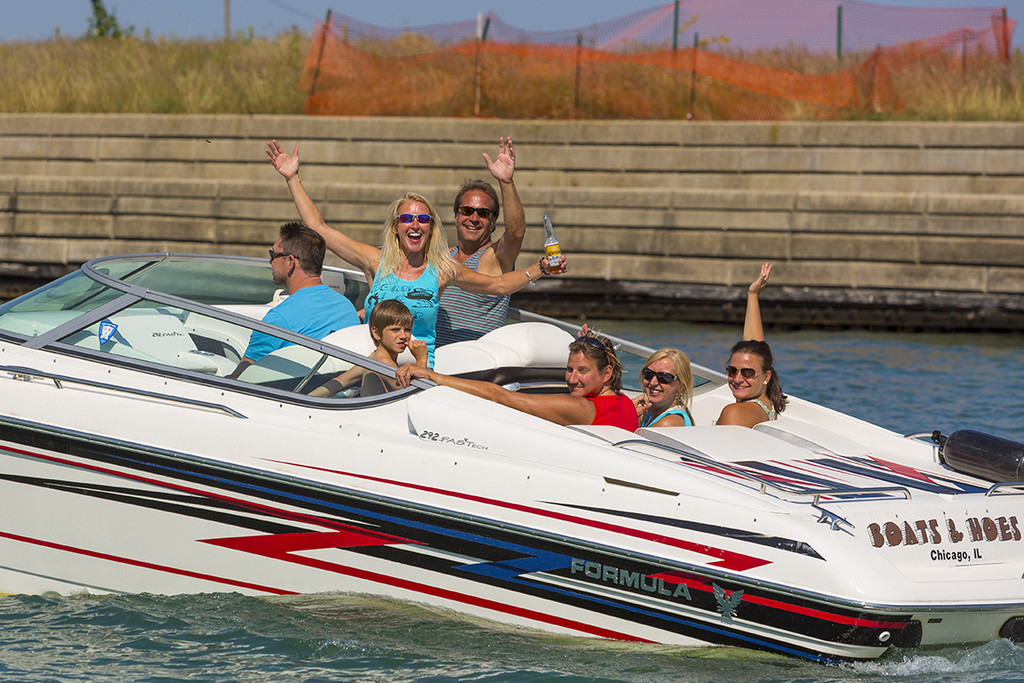
Get Involved!
The Leukemia Cup has grown to include several events throughout the summer of 2015. For more information and to register for the events, please visit leukemiacup.org/il
The Stand Up Paddle event will be held on the Chicago Waterfront by Columbia Yacht Club on Sunday, June 28th. For more information, or to put a team together for this terrific day of fun, go to www.leukemiacup.org/il/localchapter/standuppaddle.
The Powerboat Poker Run, featuring stops at various yacht clubs along the Chicago Waterfront, is Saturday, August 8th at Corinthian Yacht Club in Montrose Harbor. For more information, or to participate go to www.leukemiacup.org/il/localchapter/powerboat.
The Red Sky Night benefit event is Friday night, August 21st at Columbia Yacht Club. The evening features cocktails, a silent auction, a live auction, and live music. For information or tickets, please go to www.redskynight.org. The following day, the Leukemia Cup Regatta kicks off with racing on two courses off the Chicago lakefront followed by a dock party with drinks, food and music and the announcement of the race winners and fund raising winners.
This article appeared in the Summer 2015 issue of Lakeshore Magazine. Subscribe HERE.
Click the image above to read the full issue.

